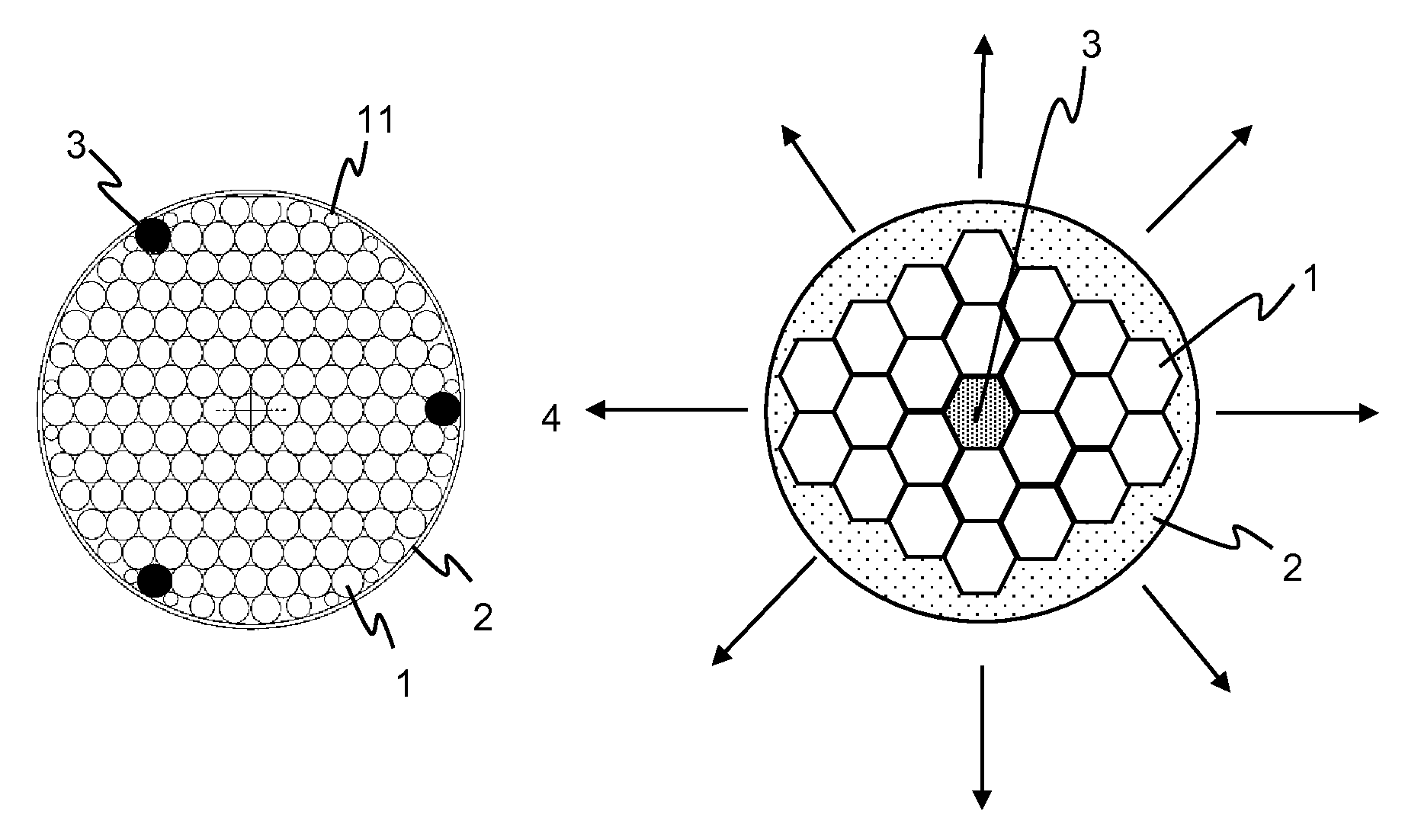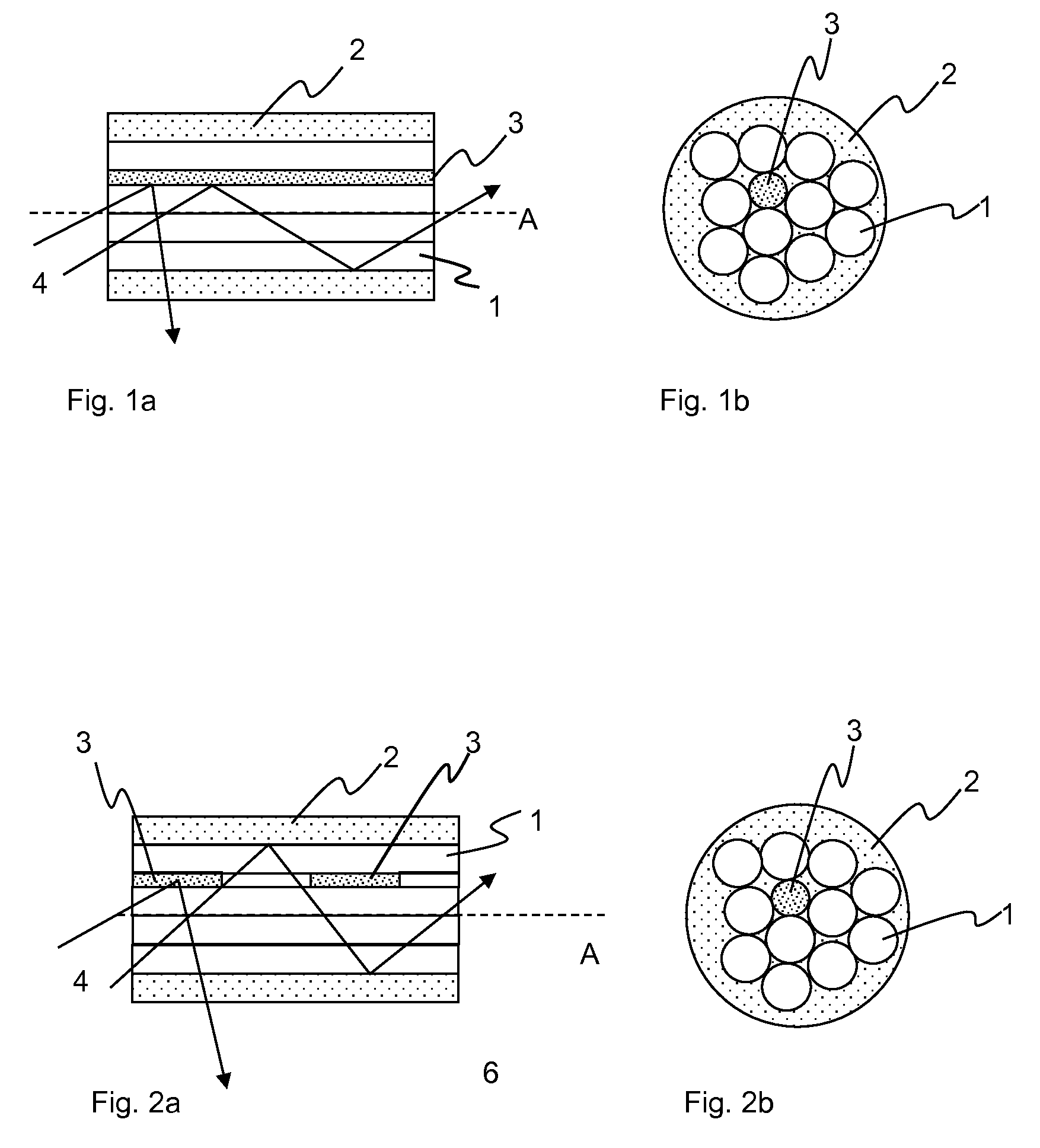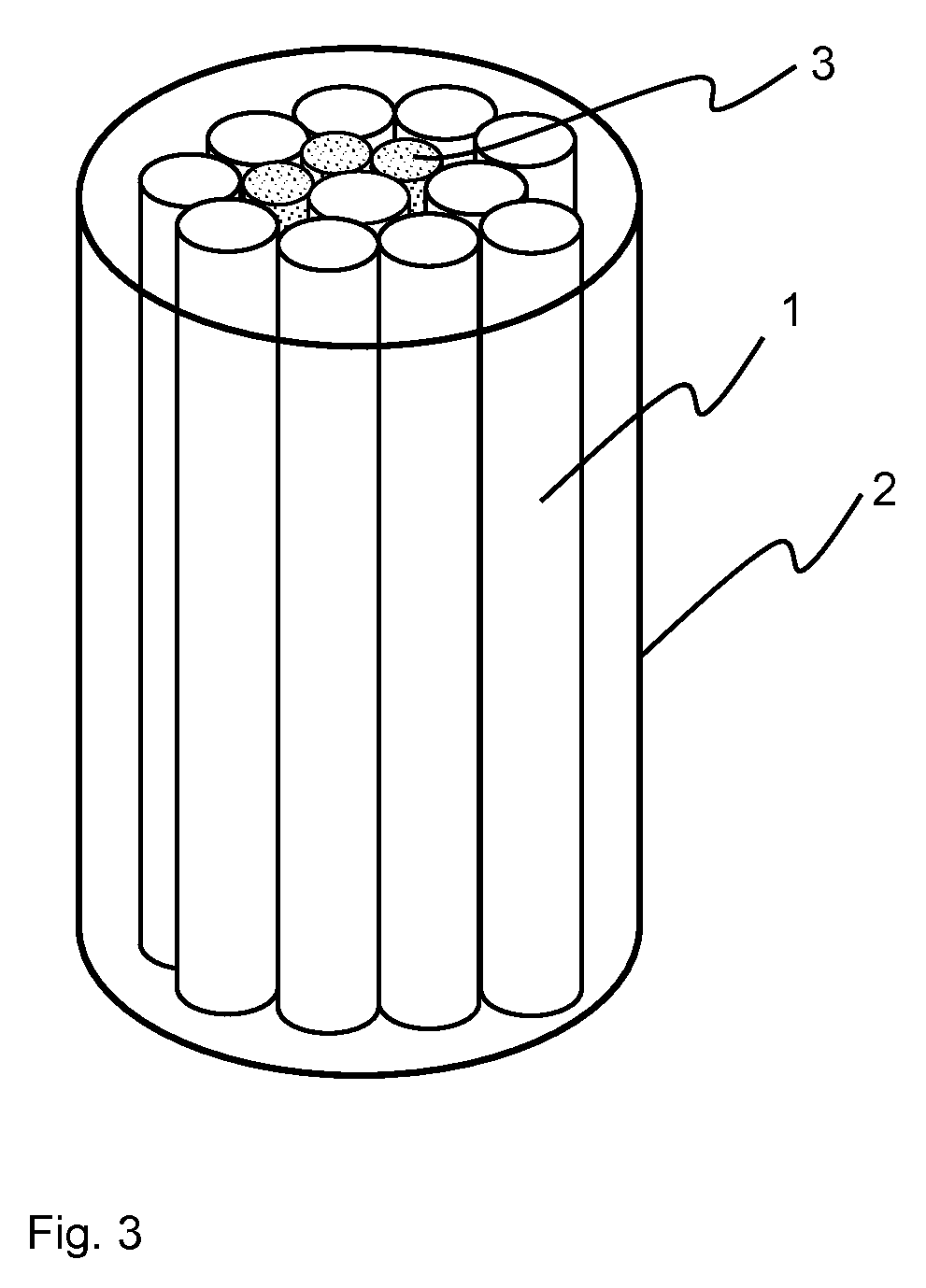Side emitting glass element
a side-emitting glass and element technology, applied in the direction of optical light guides, semiconductor devices for light sources, weight reduction, etc., can solve the problems of difficult to produce corresponding preforms, inefficient coupling of light in this case, and complicated use of core geometries
- Summary
- Abstract
- Description
- Claims
- Application Information
AI Technical Summary
Benefits of technology
Problems solved by technology
Method used
Image
Examples
Embodiment Construction
[0071]FIG. 1a schematically shows the longitudinal section along the longitudinal axis A of a side emitting glass element according to the invention. This glass element comprises a scattering element (3) composed of a glass, in which scattering particles produced or incorporated by segregation and / or phase separation are present as scattering centres and which is situated between light guiding elements (1) composed of glass having the refractive index n1. There is a phase boundary between the individual light guiding elements (1) through which a portion of the guided light can pass through and reach the scattering element (3). The cladding (2) composed of glass having the refractive index n2 encloses the glass element along its longitudinal axis (A). Light coupled into the glass element can pass through the phase boundary of the individual light guiding elements (1) and thus from one light guiding element (1) into others and thus reach the scattering element (3). It is coupled out f...
PUM
| Property | Measurement | Unit |
|---|---|---|
| diameter | aaaaa | aaaaa |
| diameter | aaaaa | aaaaa |
| diameter | aaaaa | aaaaa |
Abstract
Description
Claims
Application Information
 Login to View More
Login to View More - R&D
- Intellectual Property
- Life Sciences
- Materials
- Tech Scout
- Unparalleled Data Quality
- Higher Quality Content
- 60% Fewer Hallucinations
Browse by: Latest US Patents, China's latest patents, Technical Efficacy Thesaurus, Application Domain, Technology Topic, Popular Technical Reports.
© 2025 PatSnap. All rights reserved.Legal|Privacy policy|Modern Slavery Act Transparency Statement|Sitemap|About US| Contact US: help@patsnap.com



